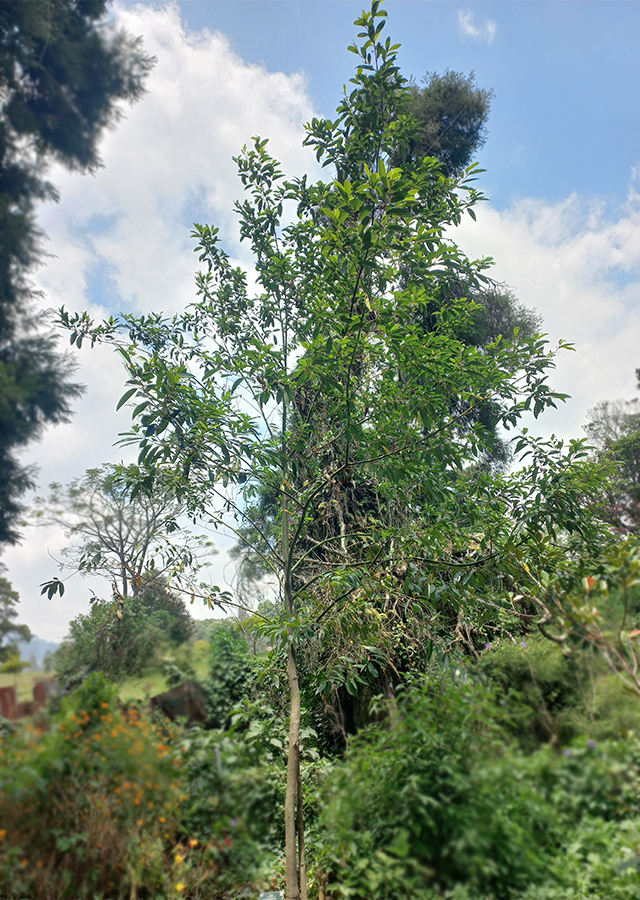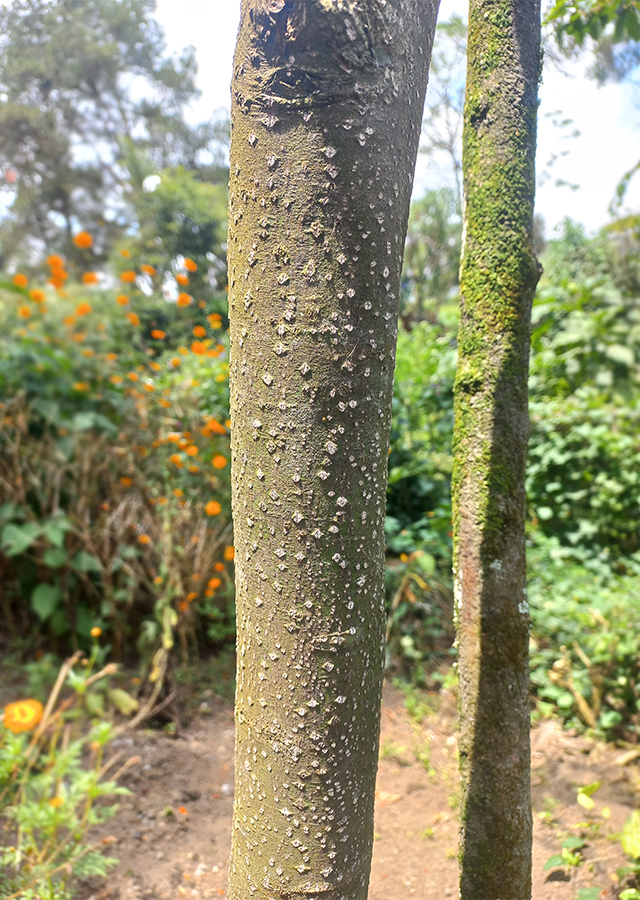Traditional Herbs from Litsea cubeba
fever
- Take enough fruit and bark of antarasa, wash them thoroughly.
- Blend the two ingredients until they become a paste.
- Apply the paste on your forehead.
What is Litsea cubeba Looks like??



Parts of Litsea cubeba that could be used
- Leaves
- Bark
- Fruit
Litsea cubeba Distribution
Antarasa or Litsea cubeba is a plant from the Lauraceae family that grows widely in Southeast Asia, eastern Asia (Indochina), and is cultivated on a small scale in Formosa and Japan, southern China, especially the provinces of Guangxi, Zhejinang and Sichuan. L. cubeba is also found in the mountains of Taiwan, Thailand, northeastern India, and grows wild in Korea, Vietnam and Indonesia. In Indonesia, L. cubeba grows in groups on mountain slopes in Sumatra, Kalimantan and throughout Java. This species has various benefits, including use in traditional medicine, as a source of food flavoring, a source of essential oils, a source of wood, a pioneer species when restoring native forests, a shade tree, and a windbreak in plantations. L. cubeba is widely cultivated for its essential oil and has been traded internationally, and is included in the top 10 world trade in essential oils. This essential oil can be produced from all parts of the plant and has very wide uses, namely as an ingredient in medicines, aromatherapy or fragrances, food preservatives, natural pesticides, and various other pharmaceutical products. This oil can also be directly used in the food, cosmetics and cigarette industries. Based on its function as a medicinal plant, in traditional Chinese medicine, L. cubeba has been used as a warmer and pain reliever for more than hundreds of years, and is believed to be able to treat other health problems.Agroecology of Litsea cubeba
The habitat of L. cubeba is generally found in hilly areas, sunny slopes, bushes, sparse forests, roadsides, river banks and grows well at an altitude of 700-2300 m. In East Kalimantan, L. cubeba is found growing at an altitude of 400-600 m. In Java, this species is found growing in fertile soil and also near sulfur lakes.
Morphology of Litsea cubeba
- Short straight stem, bark 1 mm thick, very hard, green outside, yellow inside, with large lenticels, lemon-like aroma and spicy taste. Stem, especially at the tip, has short hair, slightly hairy, sometimes smooth, black .
- Single leaves, arranged alternately (alternate), aromatic (leaves when squeezed have a strong lemon smell), petiole 8-18 mm long, leaf shape lanceolate to oval, base of leaf pointed (acute), apex tapered long, finely spotted, green-brown when young, shiny dark green above, glaucous below, both surfaces covered with a whitish or bluish waxy substance, slender lateral veins in 8-12 pairs.
- Flowers diameter 3-4 mm, yellowish white. Tepals number 5-6, broadly ovate, glabrous outside, with 9 stamens in 3 whorls, sparsely hairy filaments 3rd with 2 subsessile basal glands, anthers rectangular. Female flower with 9 staminodes, ovary large and glabrous with very short style and large multi-lobed stigma.
- Globose berry, 5-6 mm, apiculate when young, blackish in color when mature, sits on a 3-5 mm long stalk that thickens slightly at the apex into a cup-shaped receptacle.
- Seeds are round, white.
Cultivation of Litsea cubeba
- Generative propagation of plants through seeds (generative) and vegetatively through stem cuttings and shoot cuttings.
- Seeds that have been sown or sown will germinate in 6-8 weeks and continue for up to 5 months. Seedlings are ready to plant when they are old 9-20 months.
- Plants produced from cuttings can begin to bear fruit when they are only 2 - 3 years old.
Litsea cubeba, more details :
Chemical Content of Litsea cubebaAlkaloids (laurotetanine, O-methyloblongine, oblongine, xanthoplanine, magnocararineu), essential oils (citral, limonene, methyl-heptenone, α-pinene, β-pinene, linalool, 1,8-cineole, citronellal, citronellol, sabinene, α-thujene, champene, 2,6-dimethyl-hepten5-al, -terpinene, isolemonine, terpinolene, neo-isopulegol, isopulegol, 4-terpineol, terpineol, trans-carveol, geraniol, geranial, -terpenyl acetate, -kopaen, metal cinnamate, metal eugenol , nerol, zingeberene, (E)-caryophyllene, -fernesene, -humulene, -curcumin, zingiberene, Δ-kadinen, karyophyllene oxide), lauric acid, capric acid, monoterpenoic acid (lithseakubeba acid) and monoterpenlactone (6R)-3,7-dimethyl-7hydroxy-2-octen-olide, acid vanillate, tran-3,4,5-trimethoxylsynyl alcohol and oxonantenin, acid cis-4-desenoic acid, cis-4-dodecenoic acid, and cis-4-tetradesenoic acid.
Benefits of Litsea cubeba
Heats and relieves pain, improves digestion, treats coughs, bronchitis, colds, headaches, diarrhea, stomach ache, chest pain, muscle and muscle spasms, rheumatism, aches, reduces fever, treats mental disorders (hysteria and forgetfulness) , helps cure athlete's foot on the soles of the feet and skin diseases, pain during menstruation, motion sickness, heart arrhythmia, vertigo, paralysis and in post-natal preparation. In aromatherapy the oil is applied as a cooling agent against acne and dermatitis, and to relieve anxiety and stress. Has antiparalytic, diuretic, antioxidant, anticancer, antimicrobial, anti-inflammatory and antitumor properties.
Simplisia of Litsea cubeba
Another Facts for Litsea cubeba :
Synonym of Litsea cubebaBenzoin cubeba (Lour.) Hatus., Cubeba pipereta Raf., Persea cubeba (Lour.) Spreng.
Habitus of Litsea cubeba
Tree. Tree, annual (perennial), grows to 4 -15 m, diameter up to 6(-20) cm
Habitat of Litsea cubeba
- Riverside", "Forest", "Mountains", "Roadside
No comments:
Post a Comment